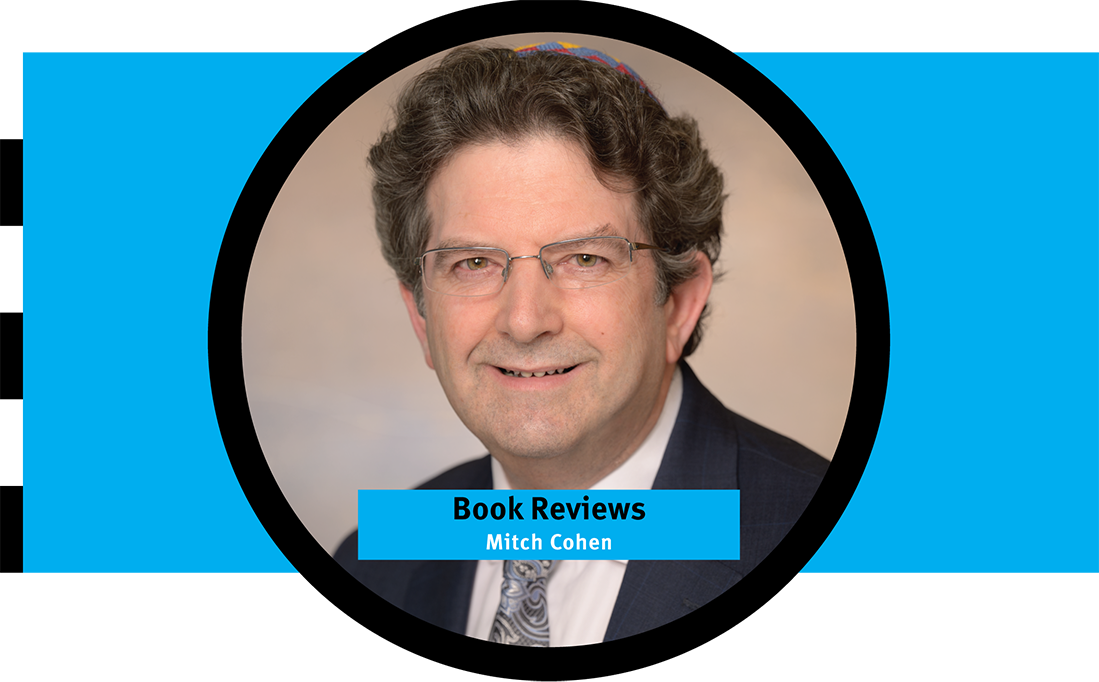“The Amazing Eleven: The Story of the Isaacs Siblings from Cincinnati”
By Nancy Isaacs Klein, with a foreword by Jonathan D. Sarna
Transport yourself back to Cincinnati in 1853. Picture your brother greeting you at the train depot with his horse-drawn carriage and coachman ready to take you to your new home. “The Amazing Eleven: The Story of the Isaacs Siblings from Cincinnati” begins with the arrival of the author’s grandfather Reb Schachne Isaacs with his wife Reitza and their children. They completed the journey from Lithuania to live with Reb Schachne’s older brother Lazarus who traveled to Cincinnati several years earlier. Reb Schachne and his family were devout Orthodox Jews. They prided themselves on keeping their Orthodox observances and traditions while embracing what America had to offer. Reb Schachne arrived in Cincinnati during the birth of the Jewish Reform movement. He was on the front lines of the battle between Orthodox and Reform Judaism. It was a time when Isaac M. Wise, the founder of Hebrew Union College and the namesake of Wise Temple, had a pulpit in Cincinnati.
The author, Nancy Isaac Klein, covers about 170 years of family history in a book that is a very quick read. The American Israelite gave me a stack of about ten books to review. As I was looking through them, my attention was drawn to the black and white cover photo of the eleven siblings. The picture looked like it was probably from the turn of the century. They were dressed in their best clothes of the period. At first I didn’t think they were all siblings because of the range of ages. I thought the man in the middle could have been the father since he looked much older than the others. He turned out to be the eldest brother, Aaron, prominently sitting in a chair that could have been a king’s throne. Several times in the book, the Isaacs family is referred to with terms like aristocracy or Jewish royalty. There was a very cute two-year-old with a prominent white kippah who was sitting on the lap of his big sister in the front row. From the age difference, I thought the sister could have been his mom. The author stated that the range of ages of the siblings was 27 years. I looked at the siblings on the cover much like I look at portraits in an art museum wondering about the story behind each face.
The author lovingly recounts the life stories of the amazing eleven Isaacs siblings. She devotes a chapter to each of her ten aunts and uncles as well as a chapter about her father Moses. In 1987, she wrote Heritage of Faith: Two Pioneers of Judaism in America, which was a biography about her father Moses Isaacs and her grandfather Rabbi Philipp Klein. In her new book, she includes highlights of her father’s story and focuses on the parts that relate to his siblings. The eleven sibling chapters are in order of their age.
After I finished the book, it was surreal to look back at two-year-old Judah on the cover now that I knew his future. I was on a first-name basis with Beck, Nesha, Rafe, Mo, and the other siblings. I thought about the matriarch Rachel and how she discouraged her children from getting married, even though many did. I was amazed at how she graduated high school at the age of 12 and could read two books a day. I thought about Rachel’s heartfelt poetry that the author shared. We learn details like these about each of Rachel’s eleven children.
A tremendous amount of research went into this book. The author thanked her cousin, Roger Isaacs, for sharing “the treasure trove of documents” with her. Letters written by siblings were included and even photographed in the back of the book, so we could see the beautiful handwriting of the time. When I read what was happening in the siblings’ own words, their stories came to life. I appreciated that Nancy Isaacs Kline left the letters unfiltered. One sibling talked about the racial changes in Cincinnati neighborhoods. The author gave a caveat saying some of the words “would be politically incorrect today and that his words were acceptable at the time and certainly described with the usual Isaacs exaggeration.” Some of the siblings wrote scholarly papers that were quoted as well as books on Jewish topics, such as kashrut.
The Isaacs family set a high bar for their accomplishments. Becoming a Phi Beta Kappa was almost a given. Many graduated or taught at prestigious universities, such as Harvard. But there were also ongoing themes of antisemitism, which directly affected some of the siblings from reaching positions of authority. Also, the Isaacs were role models on how to keep true to their Orthodox Jewish religious practices while living successful American lives. One example was when Nathan Isaacs sat on the Board of Directors for Gimbel’s Department Store, and they changed their meetings from Saturday to a different day, so Nathan could observe Shabbat.
I recommend this book to anyone interested in Jewish history in Cincinnati. Make sure to read the foreword by Jonathan D. Sarna, who is a Professor of American Jewish History at Brandeis University. I didn’t know about the Isaacs family before reading this book, and the professor presented an excellent overview that helped me get my bearings before jumping right into their stories. I found myself wanting to learn even more about the history of Jewish Cincinnati and what it was like to live through the birth of Reform Judaism as well as other pivotal times in American history. I felt inspired by the way the siblings supported each other, such as sending checks to help financially and taking care of their siblings’ children.




